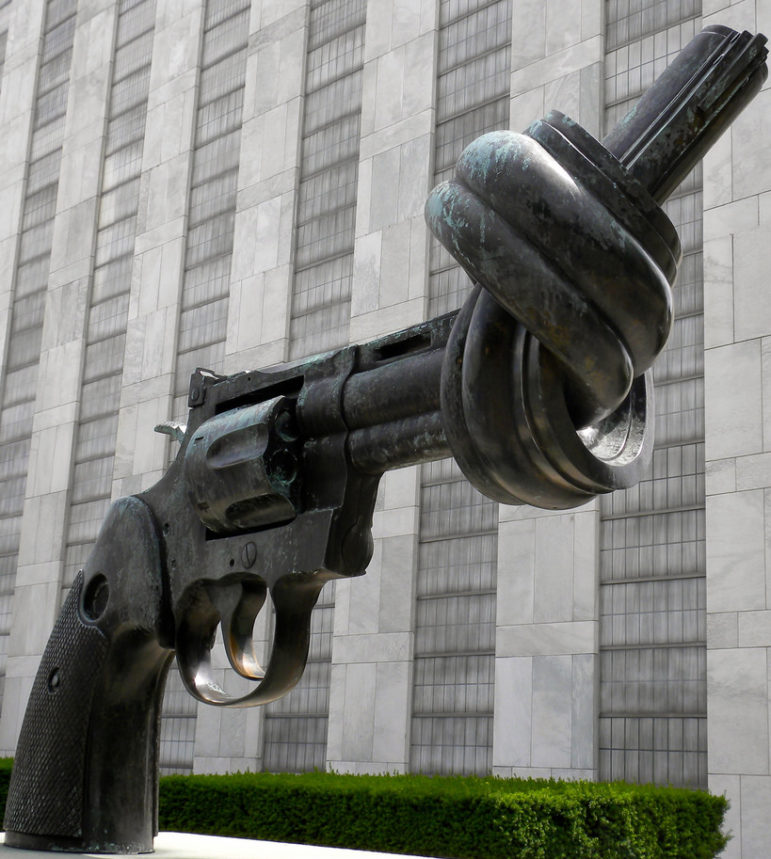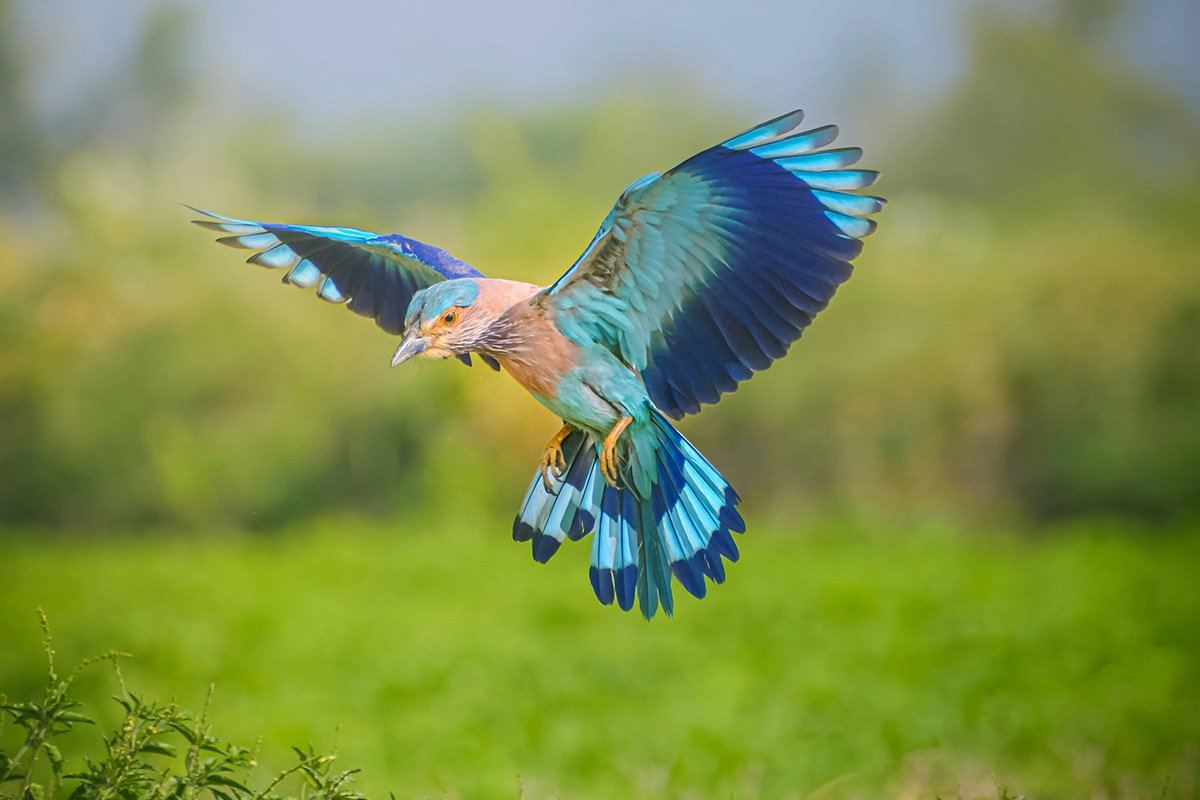
July 2, 2016; New Yorker
On July 2nd, just days before the senseless deaths of Alton Sterling, Philando Castile, and five peace-keeping police officers in Dallas, the New Yorker published an article about a program that engages New York police officers and civilians in improvisational theater games to advance empathy, on both sides of the equation. Last week, Animating Democracy, a program of Americans for the Arts, highlighted that program along with other responses from artists and nonprofit arts groups to the Black Lives Matter movement and to gun violence in general. NPQ shares these examples—and welcomes others from our readers—with the hope that they might spark additional creative approaches to channeling the raw emotions of this difficult summer and promoting understanding and justice.
The improv program “To Protect, Serve, and Understand” (TPSU), was developed in response to the 2014 death of Eric Garner at the hands of police on Staten Island, at the suggestion of Terry Greiss, executive director of the Irondale Ensemble Project, a Brooklyn-based theater company. Greiss wrote to Police Commissioner William Bratton after seeing the video of Garner’s death, saying, “You need what we do. As actors, we train ourselves to really look, to really listen.” Within a week, he’d been invited to meet with NYPD officials to develop the pilot project. The Irondale staff is willing to work with other communities to share TPSU or help develop similar programs.
Writing for the Huffington Post, Katherine Brooks shared images from social media in response to the deaths of Sterling and Castile, noting that in the immediate aftermath of tragedies like these, words sometimes fail us and images may offer a more immediate way to connect. She added, though, that “many activists, writers, and supporters have commented on the need for individuals to move beyond liking and sharing posts online, and pursue action. ‘Find the language and talk to your people,’ poet Danez Smith wrote.”
The Dream Unfinished (TDU) is an “activist orchestra” based in New York City that engages marginalized musicians and composers in classical music performances. As reported in The Establishment, TDU founder and executive director Eun Lee formed the group in response to Black Lives Matter, because “whereas musicians in other genres—hip-hop, rock, pop—openly took political stands, classical musicians and organizations remained silent.” Black musicians compose only two percent of American orchestras, as the article notes. TDU is now in its second season of “musical resistance,” and “curates programs combining music with speakers or discussions on topics such as race, gender, and media representation.” The events are described as “equal parts entertainment, consciousness-raising, and support for partner organizations.” Proceeds are shared with nonprofits that engage in direct political work, like The Center for Constitutional Rights, Black Women’s Blueprint and African American Policy Forum. On July 13, TDU marked the one-year anniversary of Sandra Bland’s death in police custody with a concert titled “Sing Her Name,” featuring old and new compositions exclusively by female composers—a rare occurrence in the world of symphonies. (For those interested in this topic, another orchestra committed to advancing musicians and welcoming audiences from diverse backgrounds is Black Pearl Chamber Orchestra, established in 2008.)
Black Poets Speak Out is a project that aims to consolidate hundreds of poems, songs, prayers, and testimonies speaking on behalf of all black people—thousands of voices insisting on justice. The group also organizes literary protests for poets and the community, and ties the power of the poetic voice to civic engagement with a letter-writing campaign to elected officials.
The Dark Noise Collective, a multi-racial, multi-genre artists collective, has issued “A Call for Necessary Craft and Intent“ for artists from various disciplines and an initiative specifically for writers called “Pens Up: How Writers Can Join the Fight Against Police Violence.” Here is an excerpt from the “Necessary Craft and Intent” document:
We reject the idea of “art for art’s sake.” We recognize that all art is political. We dedicate our artistic effort and daily practice to that which dismantles a world that seeks to end us. In the same spirit, we dedicate ourselves to the people and movements who work to build worlds where justice, safety, & equity are not just ideas, but realities. We also commit ourselves to listening to these movements and people with marginalized voices, and not speaking for them.
Sign up for our free newsletters
Subscribe to NPQ's newsletters to have our top stories delivered directly to your inbox.
By signing up, you agree to our privacy policy and terms of use, and to receive messages from NPQ and our partners.
In June, following the horrific mass murder at the Pulse nightclub in Orlando, Florida, visual artist CJ Hendry made a statement about gun violence on the largest canvas available—the sky. As reported in the Guardian, Hendry “flew a 3,000 sq. ft. piece of art over Orlando, New York and Chicago…as part of a demonstration against gun violence in the U.S.” The image is “a drawing of a T-shirt crumpled into the shape of a gun and bloodied at the muzzle. Trailing behind the banner was the slogan #ENDGUNVIOLENCE.” Hendry said, “In light of the recent and devastating events, I wanted to create something that inspired the possibility for change. To help in some small way to end gun violence in the United States.” She noted that she used a T-shirt to universalize gun victims—“No matter race, gender, sex or culture, we all wear T-shirts.”—and that the size of the banner was meant to reflect the scale of gun violence in the United States.
The Robert Rauschenberg Foundation’s 2016 Artist as Activist Fellows—ten in all—have each received a two-year grant ranging from $50,000 to $100,000 for projects addressing mass incarceration in the United States. As explained on the foundation’s website:
With 2.2 million people currently in U.S. prisons or jails, the growth rates of this industry combined with the disproportionate number of people of color locked up, mass incarceration is one of the most pressing issues of our time. The Rauschenberg Foundation believes that artists are key partners in addressing these issues, and generating lasting social, political, and economic change.
Each 2016 fellow will develop a project—many in partnership with community-based organizations, correctional facilities, or other stakeholders—that addresses the intersections of race, class and mass incarceration. (In May, NPQ reported on the first major U.S. exhibition on mass incarceration, at Eastern State Penitentiary, a former prison in Philadelphia.)
In December 2014, in response to the August 2014 shooting death of unarmed Michael Brown in Ferguson, Missouri, by police officer Darren Wilson, the Theatre Communications Group (TCG) published an article titled “The Ferguson Theatre Syllabus.” This article calls attention to a crowd-sourced list of relevant plays and other resources intended to “catalyze the difficult but vital conversations we need to have now.” Among the plays included are Appropriate, by Branden Jacob-Jenkins; Force Continuum, by Kia Corthron; Hands Up: 6 Playwrights: 6 Testaments by Nathan James, Nathan Yunberberg, Idris Goodwin, Glenn Gordon, Dennis Allen II and Eric Holmes; Father Comes Home From the Wars: Parts One, Two and Three by Suzanne-Lori Parks; The Mojo and the Sayso by Aisha Rahman; and Party People by Steven Sapp, Mildred Ruiz-Sapp, Ninja.
From the TCG article, the following is an explanation of why the theatre community developed the Ferguson Syllabus. It might well be applied—with a few word changes here or there—to all of the arts projects mentioned above, and no doubt to scores of others already underway or in the talking stages among artists everywhere:
We are makers and teachers of theatre. Our choices of what plays to teach and to produce will determine the cultural conversation going forward. We can amplify often-silenced voices. We can offer our audiences perspectives they are not seeing on the nightly news. We can put current events in historical, social, political and economic context. We can challenge false narratives. We have the opportunity to lift up this movement, this moment, and this conversation.
—Eileen Cunniffe











